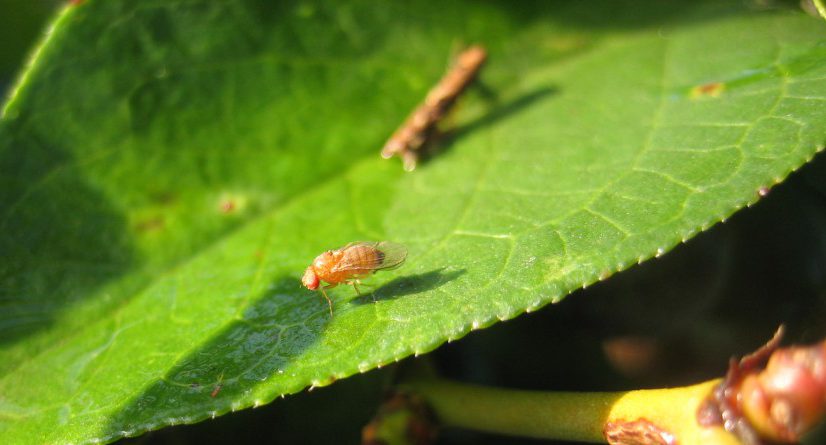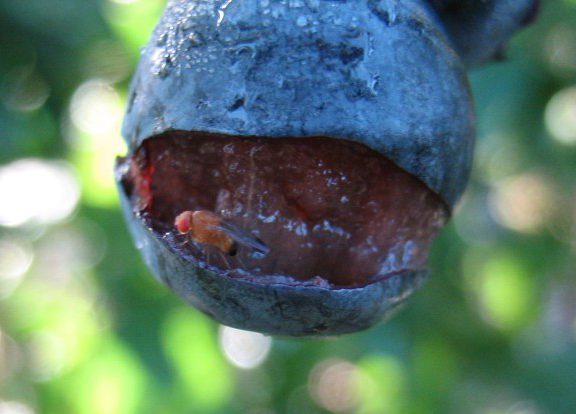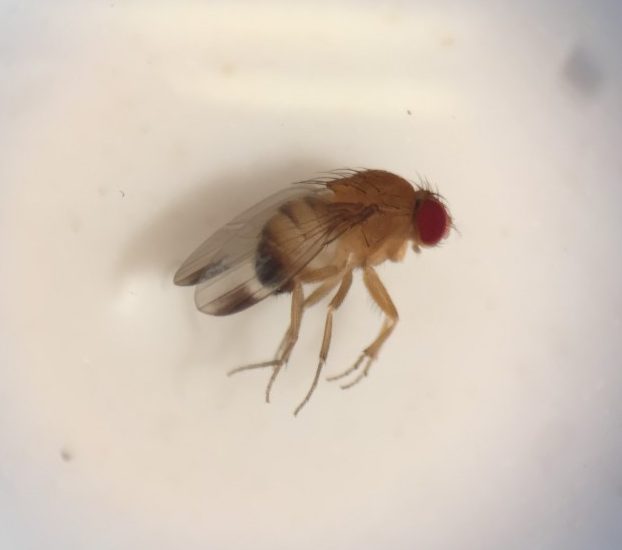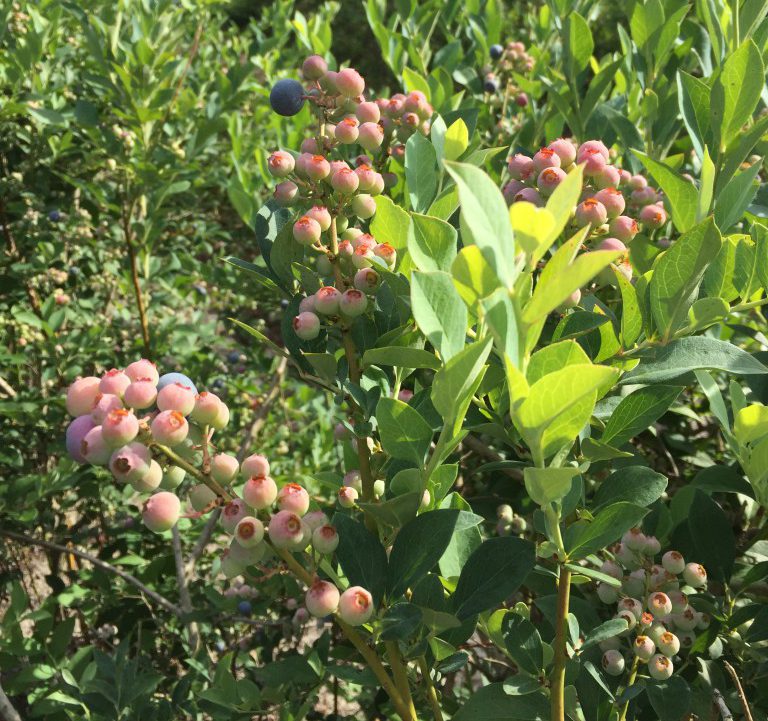Written By: Emily Cabrera, IPM Communications Coordinator
Expert Source: Ash Sial, Blueberry Entomologist

Though blueberry harvest is still months away, preparations for a “fruitful” season begin now. UGA blueberry entomologist and IPM Program Coordinator Dr. Ash Sial discussed the critical role of early detection and management in blueberry production at last week’s WinterGreen Conference.
“The most dreaded insect pest of soft berries in the southeast is the Spotted Wing Drosophila (SWD) – and with good reason” said Sial. This tiny fruit fly came from Asia in 2008 and since then has spread throughout the U.S. and up into Canada. The SWD has a wide host range of over 150 plant species and a high tolerance of extreme temperatures. So, for growers in the southeast, this means that the SWD is present all year round, and is active in every type of home garden or farm landscape waiting for an opportunity to feed and multiply in freshly formed fruits.
Crops most damaged by this pest are blueberries, blackberries, strawberries, raspberries, cherries, and even some soft-skinned grape varieties. Thicker-skinned wild grape varieties are a problem as well, because they are unmanaged, become overripe and burst open, allowing SWD to multiply in the wild as well.
“There is zero tolerance for this pest in blueberry production, which means that if a blueberry grower takes their harvest to a packing house, upon inspection even if one egg, larva, pupa, or adult fly are found, the entire harvest will be considered unmarketable and will be sent back” explained Sial of the devastating impact of this tiny fly.

The females have a unique saw-like ovipositor that is used to tear through the skin of the fruit to deposit multiple eggs at a time. Eggs hatch within 12 to 72 hours and become larvae, and feed inside the berry making the fruit unmarketable. Larvae will pupate within a few days and then emerge a few days later as adults. Depending on the temperature, a full generation is completed in about 8 – 10 days. So even within a short field season, SWD can have up to 15 generations per season in our southern climate.
 Females can be identified by a hardened, saw-like ovipositor.
Females can be identified by a hardened, saw-like ovipositor.

Males are easier to identify, as they have large dark spots on the wing margins that can be seen with the naked eye.
Stakeholders need to be on the lookout, this fly is around in our fruit producing areas and if you have seen flies in the fruit you need to start making plans to implement control before the fruit changes color. “The easiest way to scout for this pest is to set out cups of apple cider vinegar with a few drops of unscented soap to break the surface tension. You will be able to see whether you have SWD in your fields and can plan to sample fruit before harvest” explained Sial, “because you don’t want to put time and effort into harvest if your fruit is already unmarketable.”

Monitor for SWD using sticky traps or cups with apple cider vinegar. If even one fly is captured on or near the farm, begin treatment before blueberries change color.
As an invasive species, the SWD does not have a natural predator, making it a very difficult agronomic pest to contend with. “That is why our first line of defense is to make spray applications. As soon as berries start to change color, no matter what you are growing, start making applications proactively” explained Sial.
In organic systems, chemical controls are very restrictive, but Sial explained that “if fruit production is your mainstay, we recommend investing in high tunnels. This is an expensive option, but one of the best ways to keep these flies off valuable fruit.” Similarly, in the backyard or on a small scale, netting materials work extremely well as an exclusion method. Sial and his team are currently working on developing other cultural controls to help producers keep populations low enough to produce marketable fruit.
An established management program has been devised for commercial blueberry production by Sial and other researchers which are being advertised at blueberry stakeholder meetings, on the UGA Blueberry Blog as well as the IPM Blog and newsletter. If you need more information about this pest, reach out to us at ipm@uga.edu.